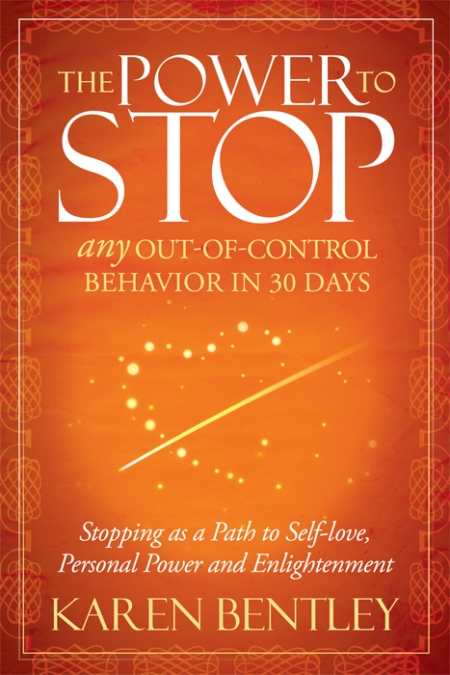The Power to Stop
Stopping as a path to self-love, personal power and enlightenment
Addictive behaviors like overeating, binge drinking, substance abuse, and smoking all have a breadth of potential remedies available, including well-known twelve-step programs, self-help guides, medical treatments, and psychotherapy. Yet even with all of these resources at hand, many addicts keep relapsing into self-destructive behavior. Author Karen Bentley proposes an alternative solution, based on the belief that what’s been missing from the mix is simple: deep and steady love for oneself.
Although she acknowledges that programs and counselors of every kind have helped countless people, Bentley notes that our society tends to point those in need toward getting assistance rather than stopping behaviors on their own. “In the midst of all this well-intended help, it’s possible to forget your active role in the stopping process,” she writes. “Your decision to stop and to heal lays the foundation for any form of help you receive.”
In this valuable guidebook to addiction cessation, Bentley acts as an informed, compassionate, and dedicated advisor, leading people toward creating just such a foundation for themselves. With clarity and passion, she presents her ideas and provides an easy-to-follow framework that can be of benefit to anyone who struggles with self-destructive habits.
Heavily inspired by A Course In Miracles as well as the work of Carlos Castaneda, Bentley’s advice often contains suggestions for connecting with God and one’s “Christ-self,” but she notes at the start that the terms are non-denominational and non-religious. They describe the “wholly loving, sacred consciousness that dwells within us all and connects us to God and to each other.” Bentley believes that tapping into this spiritual well within the self helps people to recognize their own power and capacity for happiness.
Bentley brings this spiritual approach together with other strategies involving affirmations, physical exercise, meditation, and awareness tactics. By breaking the material down into a five-week program, she makes the endeavor into a very focused journey and gives structure to a process that may feel overwhelming otherwise.
By using examples of television shows, personal experiences, and common scenarios, Bentley grounds her work in everyday experience, rather than speaking in generalities. For example, she proposes that the show What Not to Wear can actually be used as a basis for changing behavior, not just wardrobes. Learning to “throw out” past mistakes can be a first step toward healing, she posits.
Throughout, Bentley always comes back to the power of love for stopping destructive behaviors and self-neglect. Her calm, wise tone creates a strong base from which people can draw inspiration and empowerment. Even those who aren’t tormented by bad habits will have much to learn from Bentley’s sage advice.
Reviewed by
Elizabeth Millard
Disclosure: This article is not an endorsement, but a review. The publisher of this book provided free copies of the book and paid a small fee to have their book reviewed by a professional reviewer. Foreword Reviews and Clarion Reviews make no guarantee that the publisher will receive a positive review. Foreword Magazine, Inc. is disclosing this in accordance with the Federal Trade Commission’s 16 CFR, Part 255.

